Hole in the Wall
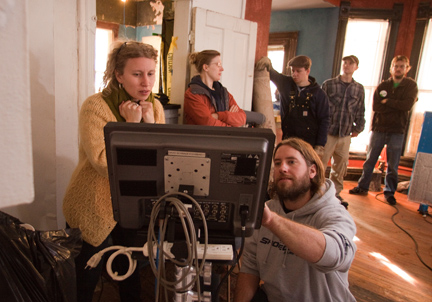
My
niece is a soon-to-be-famous film maker. She recently
won a grant from the IFP Minnesota Center for Media
Arts that enabled her to film and produce her
original screenplay called "Hole in the Wall". It is
a short film about intergenerational tension between
a father and a son.
I had the privilege of shooting still set photography
on the movie set. Exteriors were shot the first day
and interiors were shot the second day. The interiors
were in a totally dilapidated house in Minneapolis
with extremely small rooms. I shot with an extremely
wide lens and mostly from the hip to try and capture
the tightness of the set and also to minimize camera
intrusion.
It was a fascinating and tedious process. Everything
was captured with real film, which is in itself a
true challenge. A single overhead jetliner can ruin a
shot. And you never know if there was a light leak
with the film until after it is processed.
My
niece Mandy is on the left of the top photo and she
is reviewing a shot set-up. The bottom photo is the
primary room in which the father confronts the son.
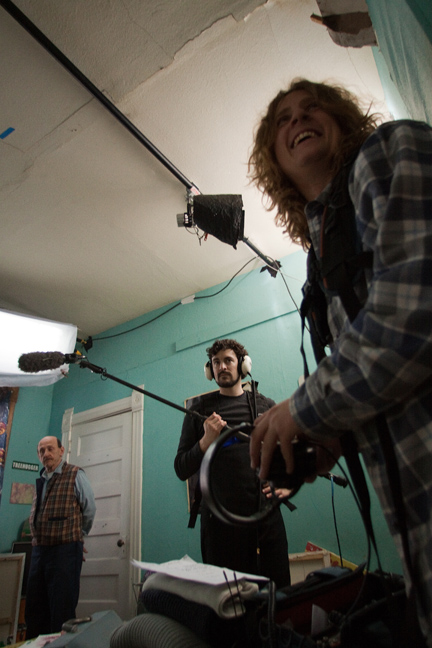
Trains are cool...
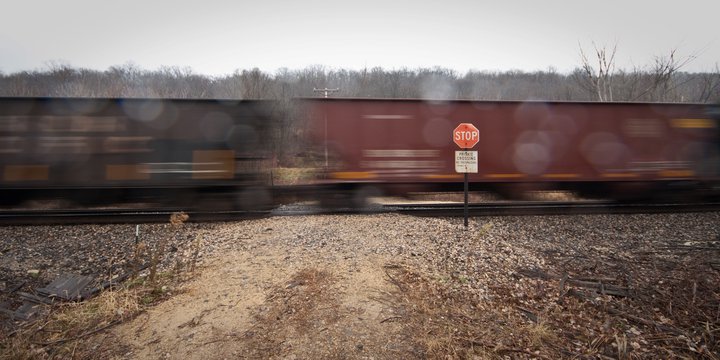
It
is difficult to take a bad picture of a moving train.
They are just that photogenic.
Trains are big and powerful. They kick up dust
wherever they go and nothing better get in the way of
a moving train.
Slow your shutter speed down, find a static element
in the foreground and shoot as many exposure
combinations as you can, as quickly as you
can.
AmericanPoverty.com and Catholic Charities USA wrap-up...
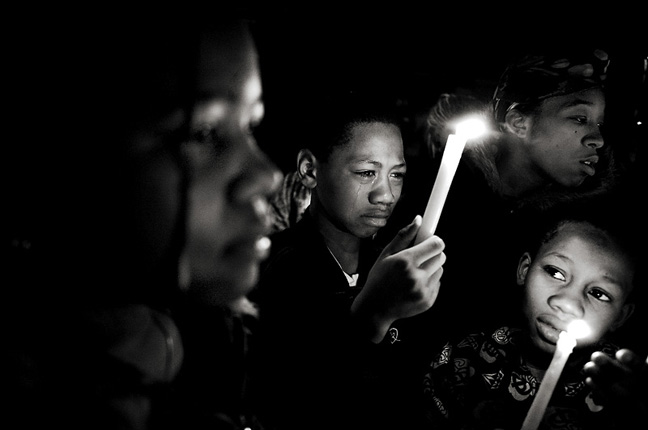
This
week marks the final chapter of the poverty awareness
photojournalism exhibit entitled "In our own
backyard". This exhibit has crisscrossed the United
States for the past 18 months and next week the
exhibit finishes in Washington DC at the annual
Leadership Summit for Catholic Charities.
Since this is the final and highest profile stop of
the tour, all of the large format images are being
reprinted and remounted, which is close to 120
images.
It is a very moving set of images, that address all
manners of poverty and everyday life. It is really
hard not to stop and soak up the texture and realism
of each image.
This has been a challenging and gratifying project.
One of the best parts of this project has been
working with Steve Liss. He is a natural-born
educator and an amazing photojournalist who gets
right into the thick of it. Please visit his web site
at: SteveLiss.com.
Time for a Max Becherer update...
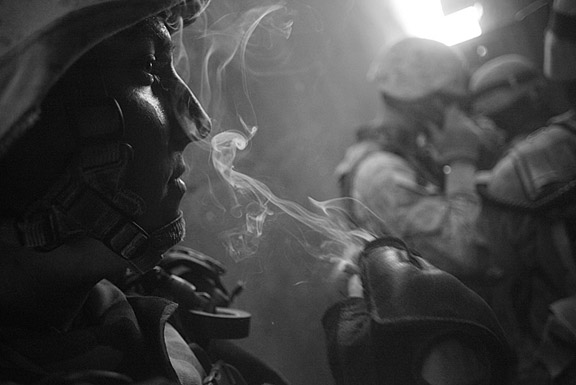
It
has 18 months since the last Max Becherer update.
Just to refresh, we came to know Max five years ago
when we hosted his photojournalism exhibit entitled
"Through the lens; Life in Iraq". Max has been in
Iraq since the very beginning of the conflict
(remember "shock and awe"?) and has seen action in
Iraq, Afghanistan, Pakistan and Gaza.
Max
has since gotten married and splits his time between
Cairo, Egypt and California when he isn't in the
field. He is still a combat photojournalist and he is
still extremely talented. Max's work has been
featured in Newsweek, Time, The New York Times, The
New Yorker, US News and World Report and Men's
Health.
Recently Newsweek Magazine asked Max to retrace the
Iraq invasion in reverse, using his photos. That
feature can be found
here.
After you visit that site, please visit Max's
website and
enjoy his talent. It is rare to see photography this
deep in the action.
Richard Nixon, the everyman
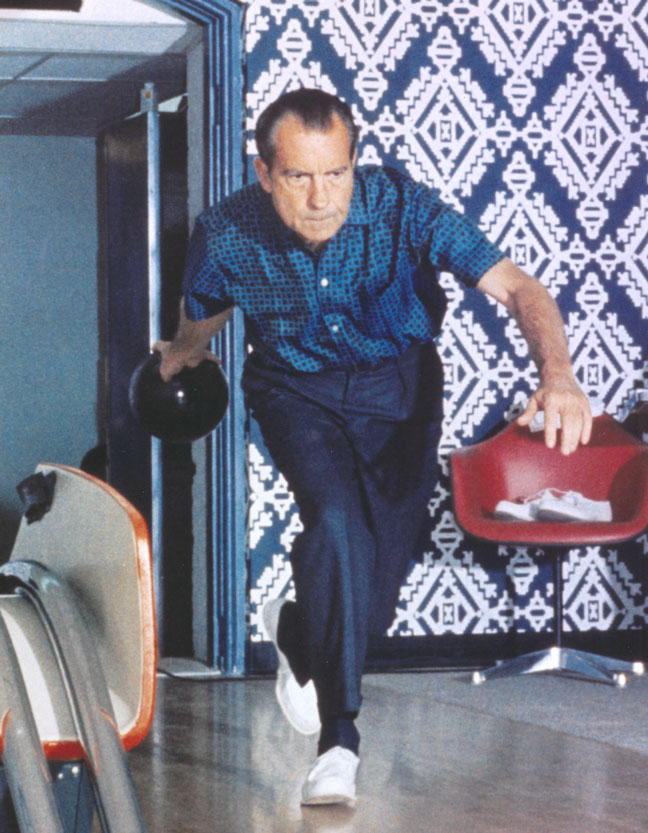
In
1969, friends of Richard Nixon paid for and had a two
lane bowling alley installed in the lower level of
the Executive Office Building. Nixon was an avid
bowler and spent quite a bit of time at this bowling
alley over the next five years. He had been known to
bowl up to twenty games without a break.
Ollie Atkins was the official White House
photographer and snapped this photo in 1970. Later
that year, Nixon's White House staff used this photo
to demonstrate that Nixon was not out of touch with
the average citizen, and in fact was just like any
other citizen.
It later achieved iconic status because of a single
scene from the 1998 film "The Big Lebowski".
There is a tremendous amount of public domain imagery
available from the US Government, some of it
noteworthy and historically significant. Some of it
kitschy. Since it was paid for with tax dollars, it
really is owned by the public.
Bully Pulpit hiatus...
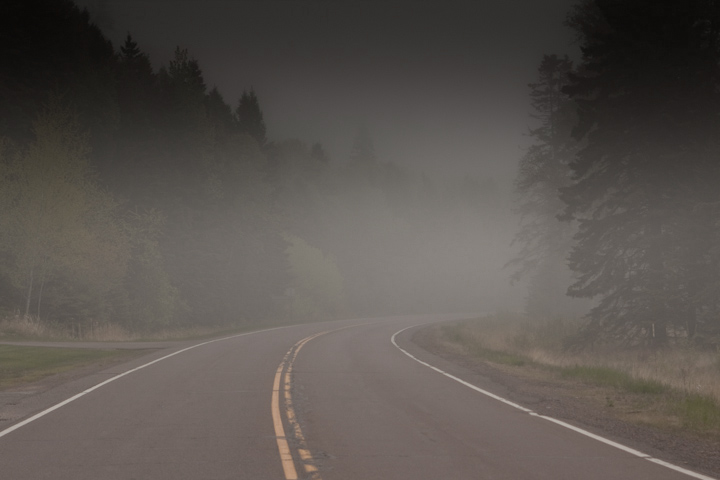
This note is being added after the fact. May was a
nearly overwhelming month between work, a
mini-vacation, graduations and non-profit activity.
In lieu of posting anything of substance, here is a
photo that was taken in May.
Grand Marias, MN on May 24, 2010. The fog was very
thick and the air was very gray. Probably not a good
idea to stand in the middle of the road, but it was
awesome.
Going ultra-wide
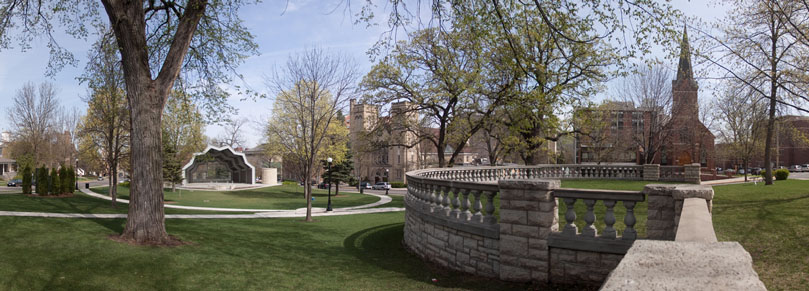
Because
the sensor in a digital SLR camera is typically
smaller than the 35 mm film that it replaced, the
physics of the focal point of the lens are changed.
This is known as "The Field of View Crop Factor" or
sometimes "The Focal Length Multiplier". The net
result means your long lens becomes longer and your
wide lens becomes narrower.
Wildlife photographers sing the praises of The Focal
Length Multiplier because their 200 mm telephoto lens
effectively becomes a 320 mm lens. Creative
photographers hate it because now a 24 mm lens
becomes a 38 mm lens and you can never get wide
enough.
My personal lens investment is from the pre-digital
era, so I never had the chance to compensate for this
effect. All of my lens became too long for many of my
purposes. I satisfy my need for wide by occasionally
renting a 14 mm ultra-wide lens (effective focal
length of 22 mm), which reminds me of the good old
days, when a wide lens was truly a wide lens.
Wide is a lot of fun and it also allows me to keep
the header imagery fresh.
Penumbra
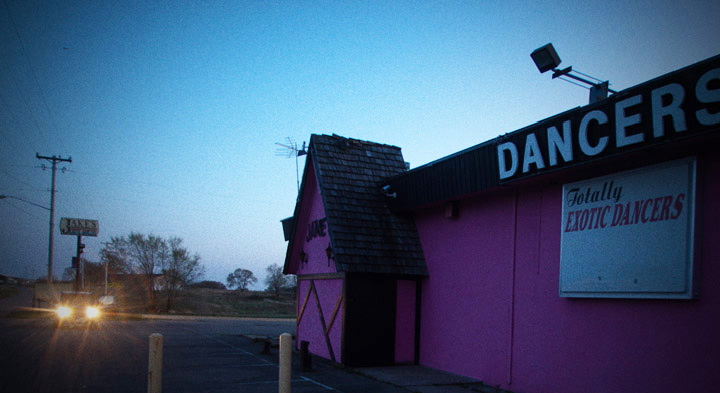
The definition of penumbra is 'almost shadow' or
'almost dark' (or light). Penumbra is typically used
to describe events in astronomy, such as when an
eclipse occurs.
In photography, penumbra is a unique opportunity to
capture texture and atmosphere in an almost
occult-like light. A strip club has always struck me
as kind of sad and desperate. I have been meaning to
take this photo for years but the highway has been
re-routed and it is especially tricky to get to. This
isn't exactly the effect I was looking for (drizzle
and water puddles would have been ideal), but I liked
the emotion the headlights provided.
Jake's strip club is located in Coates, Minnesota. It
had a litigious relationship with the community and
for years the town continually passed laws to close
it down. In 2002 the Minnesota Supreme Court ruled
finally that the town was within it's authority to
close Jake's. In an unwise effort to vote the local
politicians out of office, Jake's owner had 92
patrons (sometimes called rummy's) fill out voter
registration cards, using the strip club as their
home address.
You don't mess with the feds. It is never a good idea
to break federal voting fraud laws and especially in
such a stupid manner. Several hundred thousand
dollars later, the case was finally settled. The bar
never did reopen and it has been vacant ever since.
No doubt it will be torn down and the opportunity to
capture Jake's in penumbra light will be gone
forever.
The traveling photojournalism exhibit
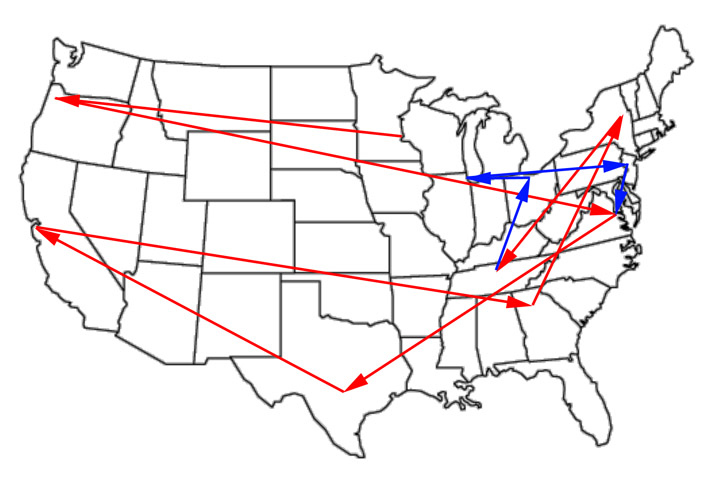
It
has been a full year since we became involved in the
Catholic Charities American Poverty photojournalism
project. It has been a rewarding and challenging year
and now a certain rhythm takes place as the exhibit
crisscrosses the United States. This coming week the
exhibit presents itself in Nashville, Tennessee. The
map above demonstrates where the exhibit has traveled
(in red) and where it is yet to travel (in blue).
Additional cites might still be added and no final
confirmation yet if the final exhibit will take place
at the White House.
Steve Liss is the Project Director and will travel to
each city immediately prior to the exhibit reception
and artfully and tastefully documents the slices of
poverty unique to each community. Our job becomes
image preparation (printing, mounting and packaging)
all of the images for each exhibit and delivering
them directly to the exhibit venue. Usually there
isn't a single day to spare and thankfully UPS has
delivered each and every package on time and in
perfect condition. Ideally there would be a larger
buffer of time for production, but then, what would
be the challenge in that?
It is a challenge and from every challenge you hope
you learn and improve from the experience. The
official web
site is worth a visit. It is very well
done.
A good gig
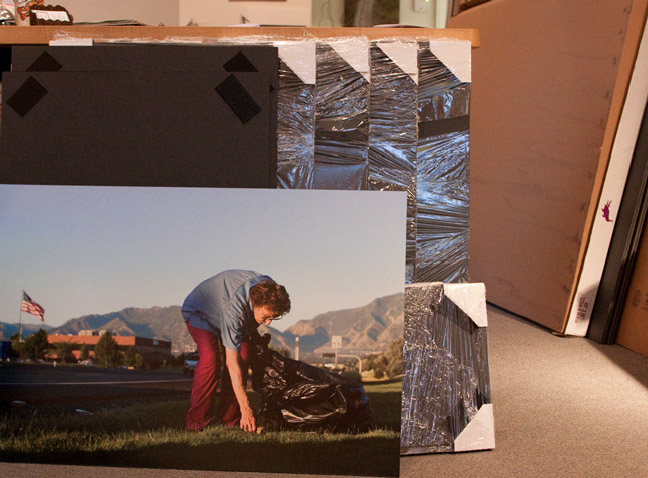
January
is usually a quiet month in the art and framing
industry. There might be a small bump in business
because of some Christmas follow-up framing, but that
trickles away pretty quickly.
This January was an exception. Several projects came
in the door because of fiscal calendar years that
started January 1st. Another major Catholic Charities
project was delivered, this time for a Centennial
Leadership Summit in San Jose, CA. This was the
largest venue so far (this being the 4th) and it will
move across the United States every month until
September, where hopefully it will exhibit at the
White House. Go to
www.AmericanPoverty.org to get the most current
updates. I love working on this project because it
leverages the power of photography and it is an
absolute adrenaline rush in meeting the tight
deadlines. In this business, this is known as a 'good
gig'.
We also had our first order from Turkmenistan. To be
more precise; Ashgabat, Turkmenistan. This is a
former Soviet Union republic that declared
independence in 1991. It was a nice sized order of 10
large format mounted images and one extremely large
canvas print. There is a sense of satisfaction in
knowing your handiwork is on the job in some remote
part of the world.
On an unrelated note; Downtown Mainstreet agreed to
co-sponsor a photography competition with Red Wing
Framing & Fine Art Printing. It is always fun to
have too much to do.
And finally, if nothing else I learned a long time
ago to surround yourself with very smart people. Or
at least stand close to them.
I am uber-excited about a new project that some very
smart people I have come to know are advising me on.
This is on a six-month timetable, so the details will
roll out over time.
Next stop: The Newseum
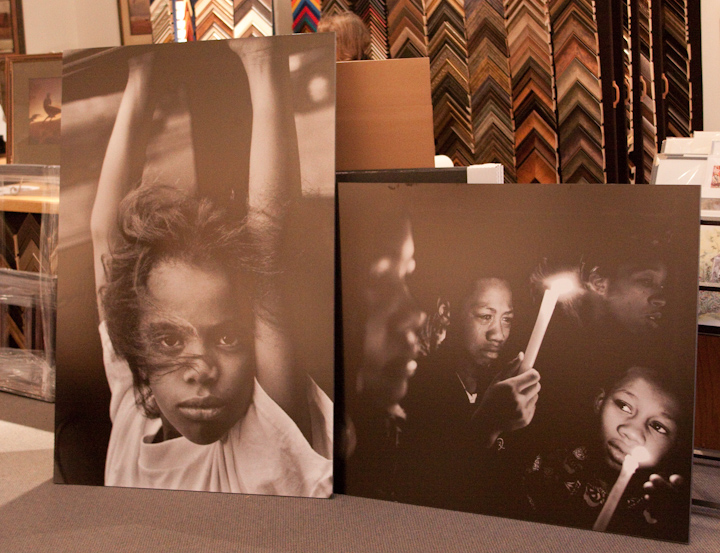
The Newseum is
an interactive museum of news and journalism in
Washington D.C. The mission of The Newseum (from
their web site) is to "educate the public about the
value of a free press in a free society and tells the
stories of the world's important events in unique and
engaging ways". In other words, it is all about the
First Amendment. It is located just off Pennsylvania
Avenue near The U.S. Capital. This is a high profile
location in a high profile city.
As part of our ongoing relationship with the
AmericanPoverty.org photojournalism
exhibit, we produced several very large (48”x72”)
mounted prints for a reception at the Newseum later
this week. The images needed to be large because the
reception hall is large and visual impact is
important. This is an exhibit designed to create
momentum for the AmericanPoverty.org campaign going
forward.
These images have this beautiful platinum print
finish. Platinum prints (sometimes called
platinotypes) is one of the oldest photographic
processing techniques and provides the greatest tonal
range of any printing method using wet chemistry
development. But because this is the digital age,
platinum prints are ‘replicated’ in the computer, yet
they do a terrific job of re-creating the original
look.
2010 will see an acceleration of activity with
Catholic Charities and AmericanPoverty.org.
And we can hardly wait.
Why don't you take a picture? It will last longer.
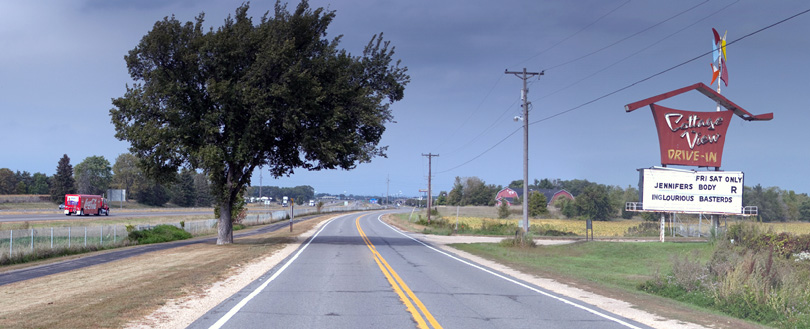
For the humor-deprived the title might seem
borderline inappropriate, but it actually is very
appropriate.
Photographers have a responsibility to document the
world as it is. So many icons of our existence are
disappearing and once they are gone, they are gone
forever. A drive-in movie theater only lasts as long
as the economics of local development allow it to.
Once the land becomes more valuable as anything other
than a drive-in, adios drive-in movie theater.
Pay attention to everything and take nothing for
granted. Don't tell yourself that someday you will
take a certain photo. Take it today.
AmericanPoverty.org
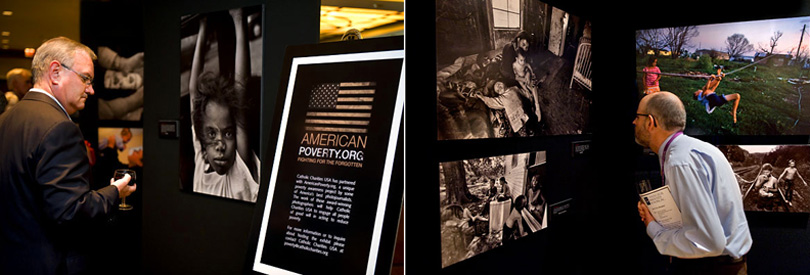
Last week Catholic Charities USA kicked off their
annual conference in Portland, Oregon with the large
format photojournalism exhibit produced by the
In Our Own Backyard photojournalism
team.
This
exhibit was entitled AmericanPoverty.org
and is meant to raise the awareness of people living
in poverty in the United States. Catholic Charities
has declared the goal to reduce poverty in the United
States by 50 percent by the year 2020. This is a very
aggressive goal, but Catholic Charities understands
that the only way to meet an aggressive goal is to
set the bar very high.
In
Our Own Backyard is
a team of skilled and seasoned
photojournalists who
have witnessed first-hand the struggles of extreme
poverty in the United States. This team includes, in
part, Steve Liss, Jon Lowenstein, Brenda Ann
Kenneally and Eli Reed. These are talented
photojournalists, with strong personalities and
stronger communication skills. They have crisscrossed
the United States in capturing exactly what it means
to be poor.
It has been a delight to be involved in this project.
The deadlines were tight and God bless overnight
delivery. There are a minimum of six more cities that
will be hosting this exhibit over the next year, so
we look forward to future involvement. Learn more
about this large format photojournalism project at
AmericanPoverty.org.
In Our Own Backyard follow-up...
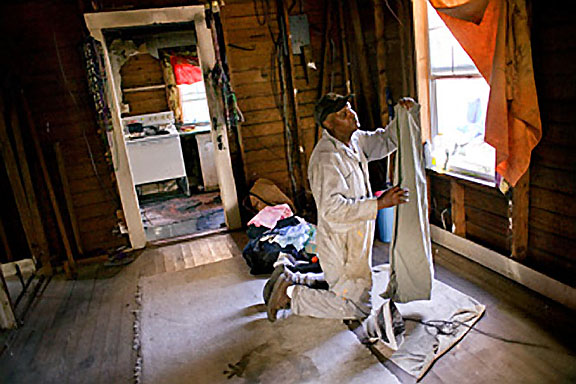
A little over a month ago, a
prototype of the 2009-2010 traveling exhibit of the
'In Our Own Backyard; U.S. Poverty in the 21st
Century' was unveiled at the College of St. Catherine
in St. Paul, Minnesota. This was an opportunity to
weigh the reaction and measure the effectiveness of
the message. Think of this as a preseason event
before the annual Catholic Charities USA convention
in Portland in September, 2009.
Things have not slowed down since then. Details have
been fine-tuned and the new web site can be
found
here. The tentative schedule for the
traveling exhibit is:
September 24-29: Portland, Oregon
October 29, 2009: Sacramento, CA
January 21, 2010: San Antonio, TX
February 24, 2010: Atlanta, GA
March 8, 2010: Albany, NY
March 25, 2010: Nashville, TN
April 22, 2010: Cleveland OH
April 29, 2010: Chicago, IL
Track the updates by following it on Facebook:
![]()
Anatomy of an Exhibit
The entire exhibit process was documented, so if we let T = the actual exhibit time (4 pm, 04-20-2009), then T-x is some amount of time before the exhibit. Think of the television show '24', except instead of saving the country from terrorists with nuclear weapons, we are hanging art (the lamest metaphor to date on the entire internet).
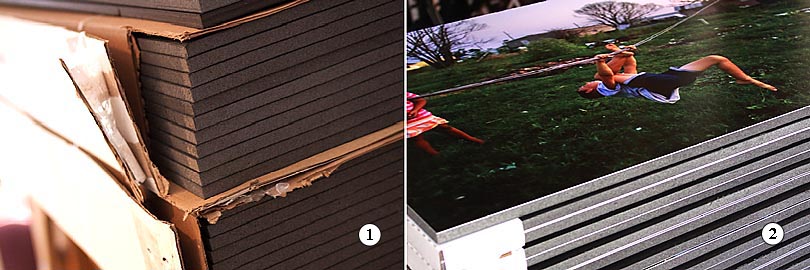
1)
T-2 weeks: Once the project is defined, the supply
chain of raw materials begins to fill up. This
exhibit required two cases of 4'x8'x1/2" black
Gatorboard.
2) T-1 week: Each image was printed on a premium
luster photo paper (a wide color gamut, scratch
resistant, but susceptible to fingerprints), vacuum
mounted to the Gatorboard and then trimmed to size
and packaged. 50 images were printed and mounted for
this exhibit.
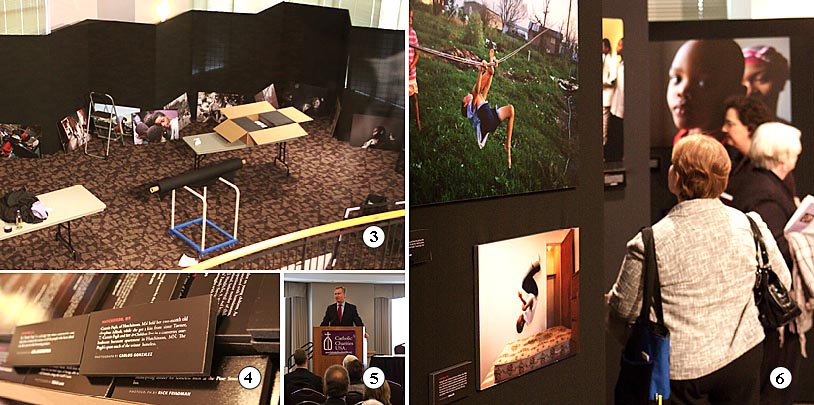
3)
T-24 hours: The finished materials were delivered the
day before the exhibit opening. The exhibit panels
were problematic for a few reasons, but the image
layout was deemed the most critical.
4) T-12 hours: The image title blocks completed the
story-lines. I was delighted to see that Carlos
Gonzales from the Minneapolis Star Tribune was
participating. I came to know Carlos from the Max
Becherer exhibit.
5) T- 4 hours: No exhibit is complete without a
politician. In this case it was the Honorable Mayor
Chris Coleman of St. Paul.
6) T- 0 hours: This exhibit generated a lot of
discussion. A 'first person, photojournalistic' style
was used.
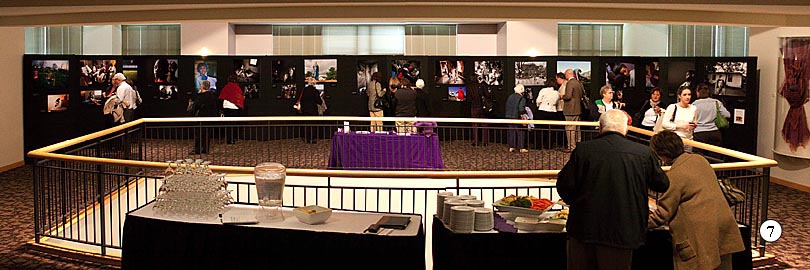
7)
T+x: From St. Paul, the exhibit moves to Portland,
Oregon and then begins a nine city nationwide tour,
with the goal of ending at the White House in 2010.
Math,
art and terrorists in a single blog entry. Now that
is efficient blogging.
The War on Poverty
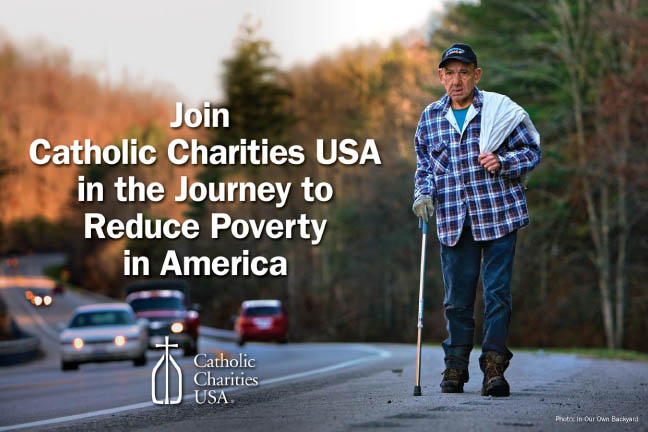
Steve Liss is an accomplished photojournalist, as
evidenced by having 43 Time Magazine cover photos to
his credit.
But it isn't this professional success that Liss
takes the most pride in. Steve Liss is a humanitarian
who uses photo essays to communicate tough topics.
His subjects have ranged from poverty in the
Mississippi Delta, to runaway youth living on the
streets of Hollywood, to a study of the Nuns of
Mankato and Alzheimer's disease. He has been the
recipient of the Soros Justice Media Fellowship for
his work on juvenile justice and the Alicia Patterson
Fellowship for his work on domestic poverty.
We are delighted and excited to be asked to
participate in his latest project entitled;
In Our Own
Backyard: U.S. Poverty in the 21st
Century
(web site).
This is a unique poverty awareness project being
undertaken by 15+ preeminent American
photojournalists. The project goal is to use the
visual power of large-format documentary photography
to elevate the discussion of making the fight against
poverty a national priority.
This project is in partnership with Catholic
Charities and their campaign to cut poverty in half
by 2020. Nine major photographic and multi-media
exhibits, each with 50 emotionally-moving large
format photographs will tour throughout the United
States begining in the fall of 2009.
This project will be kicked off at a leadership
summit on April 20, 2009 at the College of St.
Catherine, St. Paul, MN. Registration is
here and an invitation postcard is here.
Poverty has many faces and it is impossible to ignore
when seen up close and personal. It is projects like
this that make work seem less like work and more like
purpose.
Max Becherer update...
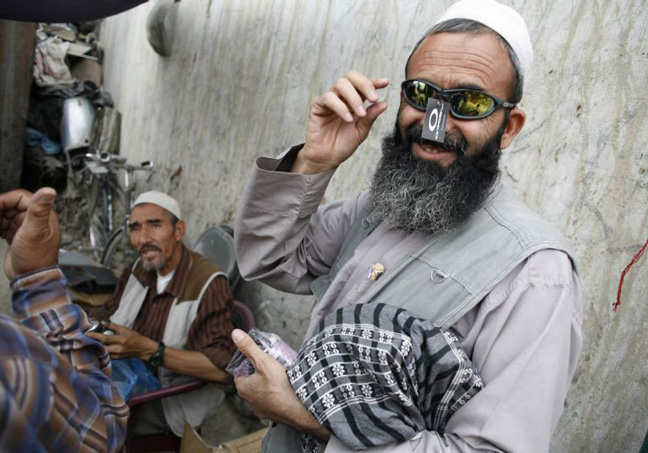
I
was delighted to get a note from Max Becherer this
morning. I have planted the seed of thought with Max
to begin to prepare a five year retrospective
photojournalism exhibit for next year. Max has been
in Iraq since the initial days of "Shock and Awe" and
has made a career of globetrotting to the hot spots
on the planet. But let Max speak for himself:
"Hi John!
So good to hear from you. I hope you are having a
great New Year! I am in Cairo, Egypt at the moment
but should be heading to Iraq for the Provincial
Elections later this month. I also think it will be a
good place to be when Obama takes office. I was up at
the Egyptian Border with Gaza last week and watched
as Israeli bombs blow up the tunnels and as the
Palestinian wounded came over on their way to
Egyptian hospitals. It was a difficult scene. I was
waiting for a chance to enter Gaza but they are
keeping a tight lid on things there.
So, your idea sounds great. I would love to do a five
year retrospective. There are so many ways we could
go with it for sure. I have a portfolio book of
images I collected from the last five years.
Last year I started covering the elections in
Pakistan. It was interesting and I was even able to
head up to Peshawar where the North West Territory
begins. What a wild place. In any case, I was in Iraq
at the last part of this year for the New York Times
and then did an assignment about Samarra for the
Smithsonian Magazine which is on newsstands now. This
week I head to Baghdad for a month and then in April
I will be in Afghanistan where things are expected to
be difficult this year. That is all for now.Thanks
for checking in with me. I hope we get to see each
other soon. Say hello to the crew for me!
Best,
Max"
Tom
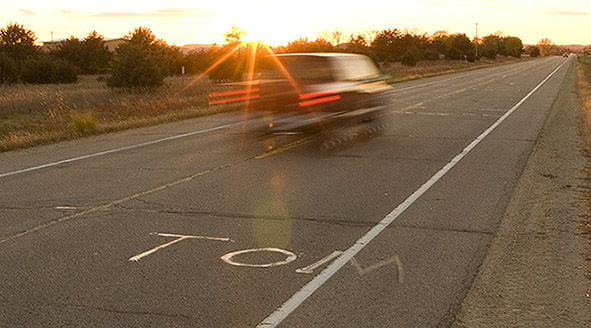
I have been meaning to take this
photo for years. The locals will recognize it as
Wisconsin Highway 35 (northbound), just outside the
Red Wing Airport. This stretch of road is in rough
shape and road crews have aggressively patched most
of the cracks.
Who is Tom? Is this a cry for recognition? An epithet
for a lost friend? Or maybe it was the last day of
seasonal labor?
Ode to Tom.
April 1st victim
So, if a friend of yours told you that he he was just awarded an NSF grant (not that he is qualified) to document glow-in-the-dark Antarctic rabbits from an undisclosed 1980's Russian nuclear accident, would you believe him?
I did. Now you can too. Adventure photography. You have to admit, he did a good job.
Blog from the Baghdad Bureau
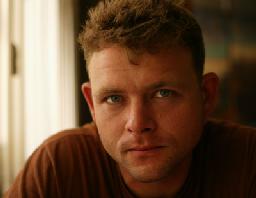
In September 2005 we hosted a photojournalism exhibit by Max Becherer. Max was an embedded photographer in the initial 'Shock and Awe' invasion of Iraq in 2003 and has been back and forth between Iraq and Afghanistan several times, usually for months at a time. Max's exhibit presented several story-lines of what life in Iraq is like for Iraqis in the post-Saddam era. The objective of the exhibit was to present an honest portrayal; it is what it is.
It was a very moving exhibit and I am proud to have Max as a friend. Max is a giant of a man who has an uncanny eye to capture the emotion within an image. This can be some pretty horrific combat photography and it takes a very special skill set to be both sensitive to the subject matter and still tell the story.
Max has some very emotional reflections on the past five years in Iraq. It was published in the New York Times on March 18, 2008. It can be found here. After you read that, visit his web site. www.MaxBecherer.com
To Max; keep your head low and travel safely.
